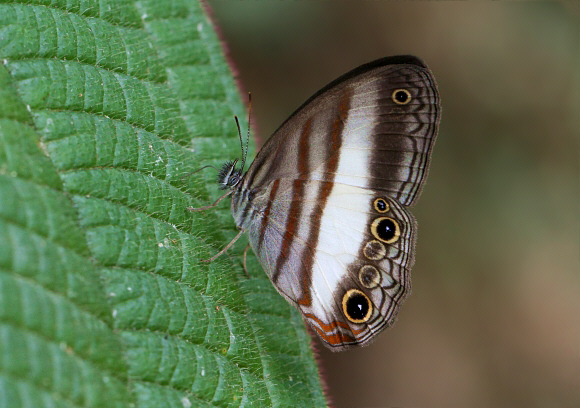
Introduction
There are 1100 known species of Satyrinae in the neotropical region. About 400 of these are placed in the Euptychiina. Butterflies within this tribe include the ‘ringlet’ genera Euptychia, Magneuptychia, Harjesia, Cissia, Caeruleuptychia, Magneuptychia, Harjesia etc; together with Oressinoma and the various ‘wood nymph’ genera i.e. Parataygetis, Posttaygetis and Taygetis. Most are inhabitants of the forest understorey and tend to fly close to the ground. They generally avoid sunlight and prefer to fly at dawn or on cloudy days when light levels and temperatures are low.
There are 8 known species in the genus Pareuptychia. The butterflies are larger than most other ringlets, and are characterised by having white wings marked with broad dark brown bands.
Pareuptychia metaleuca is a common species found from Mexico to Peru.
Habitats
This species inhabits disturbed areas in cloudforest at elevations between about 800-1500m.
Lifecycle
The egg is globular, black, and laid singly on or near the grass Eleusine. The larva is solitary and feeds nocturnally. When fully grown it is green, with a pair of short caudal prongs. It has a green head which bears a pair of short red horns. The chrysalis is smooth, pale green in colour, and is suspended by the cremaster from a stem or stout leaf.
Adult behaviour
The butterflies are solitary in behaviour, but usually several can be found within the same vicinity. They fly in cloudy or sunny conditions, and can be found deep within the forest, or in open areas such as forest edges or along sunlit forest tracks. In common with other neotropical ringlets they feed as adults at decomposing fungi and rotting fruit.
